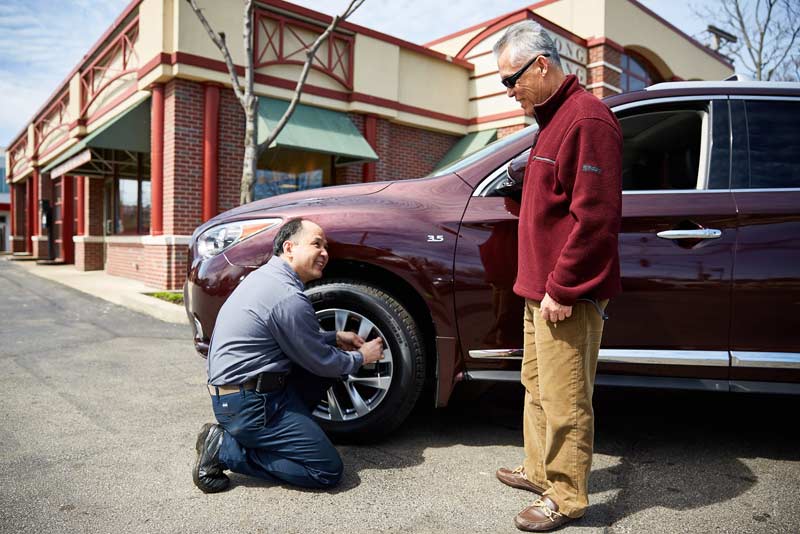 Question: I took my minivan to a quick lube for an oil change last week (it’s near my office), and they said I was due for new tires. I only have 40,000 miles on the vehicle. How can I be due for new tires already?
Question: I took my minivan to a quick lube for an oil change last week (it’s near my office), and they said I was due for new tires. I only have 40,000 miles on the vehicle. How can I be due for new tires already?
Answer: While 40,000 miles doesn’t seem like a lot, tires can wear out as early as 30,000 miles or last for as long as 80,000 miles. How long your tires lasts depends on the tires, the way your vehicle is designed, the roads you drive on, your wheel alignment, your driving habits and even the age of the tires. Sometimes, it doesn’t matter how many miles have been driven.
Here are Quick Tips To Determine If You Need New Tires:
- Check Your Tread Depth With A Penny or a Quarter—Legally, you must have 2/32 inch of tread on the tires, a measurement you can check with a penny. Place a penny into several tread grooves across the tire, and see if part of Lincoln’s head is covered by the tread. If it is, you have more than 2/32 inch of tread depth remaining. If not, you’re due for new tires! To check for 4/32 inch of tread, do the same thing, but use a quarter to see if the tread touches Washington’s head. (See below to see why many subscribe to the quarter test.)
- The Tread-Wear Indicators—Most tires have bars of hard rubber known as tread-wear indicators that appear across the treads as they wear down. When these bars are flush with the tire tread, it means you have 2/32 inch of tread left and need new tires. This is the legal limit in most states.
- Look For Bulges, Bubbles Or Protrusions—A bubble in any part of the tire indicates the inner liner has been damaged and air is escaping. This increases the chances of a blowout. This is a safety issue that can’t wait for your next scheduled appointment!
- Don’t ‘Sidestep’ The Sidewall—Check for tacks, cuts or grooves in the sidewall because any of these could mean the tire is developing a leak or is about to blowout.
What’s the Difference Between 2/32-inch and 4/32-inch Tread Depth?
For years, 2/32 inch was the accepted threshold for worn tires. But several years ago, the team at Tire Rack conducted a series of tests that makes the case for replacing tires sooner. During the tests, they compared the stopping distances at 70 mph for a 2006 BMW 325i and a 2006 Ford F-150 Super Cab. They equipped the vehicles with new tires, tires with 4/32-inch tread depth and tires with 2/32-inch of tread.
The vehicles with 2/32 inch of tire tread needed 100 more feet to stop than the vehicles with 4/32 inch of tire tread. The vehicles with 2/32-inch tread were still traveling at 45 mph when the vehicles equipped with the other vehicle had already come to a complete stop.
For us, those tests were a compelling reason to replace tires sooner rather than later.
Not Sure about the Condition of Your Tires?
Stop in today at Hong Kong Auto, and we’ll be happy to check your tires and ensure your tires are roadworthy.
Additional Reading:
Why outfit your foreign car with winter tires?
Do tires expire? What you need to know about the test of time.

